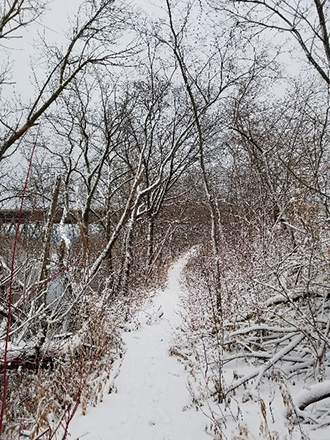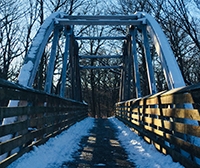Snow, and more importantly snowmelt, is vital for replenishing local rivers, lakes, and sub terrain water tables. Snow cover helps protect low growing plants (and the roots of larger shrubs and trees) from extreme temperature swings and from drying out in the cold dry air. Snowy winter months are also very beneficial for native woodland and prairie seed to germinate the following spring - when (most) native seeds are developed, they are in a state of dormancy to protect them from germinating, or growing, before weather conditions are ideal. When the seed is laying on the ground, the snow, and subsequent freezing and thawing, softens the seed coat allowing the cotyledons (the first leaves to emerge from the seed) to break through. If the seed coat isn’t softened, then the seed won’t germinate in the spring. When we here at the Urban Ecology Center propagate native seed, we use a process called stratification, which is a method of putting a seed through a “winter environment” in a controlled setting. You can learn more about stratification by joining us at any of our ROOT volunteer times!

Winter snow also helps protect small mammals from predators. Small mammals, such as mice, voles, and shrews, live in this subnivean world where they create tunnels to navigate this winter wonderland to find food and create nests. These tunnel systems are formed in a variety of ways. One way is by snow falling on leaf litter, vegetation, or roots that physically hold up the snow off the ground, another is through sublimation, when solid snow particles change into a moist gas from the warmth of the ground, which creates a small ice “roof.” These small mammals will then take these naturally created tunnels and expand them and create entrance/exit holes. As the snow melts, look closely for these little tunnel systems!
Photo Credit: Jeff Veglahn, Three Bridges Park





